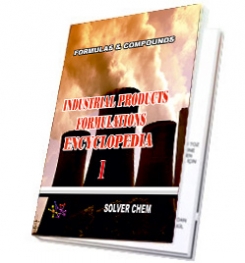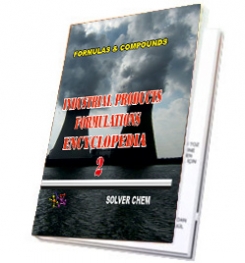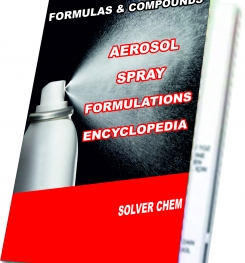-
1. It can be described as a localized form of dyeing, applying colorant to selected areas of the fabric to build up the design. Textile printing, like textile dyeing, is a process for applying color to a substrate. However, instead of coloring the whole substrate (cloth, carpet or yarn) as in dyeing, print color is applied only to defined areas to obtain the desired pattern. Dyeing can hold single color where as printing can handle 12 to 20 colors in single go.
- “2. A fabric that has been printed with a paste made of an insoluble pigment mixed with a binder and a thickener.” In pigment printing, insoluble pigments, which have no affinity for the fiber, are fixed on to the textile with binding agents in the pattern required. Pigment printing is most economical printing process and allows maximum output of goods because of the elimination of washing off, quick sampling and high printing speeds. It is not possible to apply it directly on the fabric. Binder must be used to apply the pigment dye on the fabric.
- As, Chart Describes major portion of textile printing is covered by Pigment Printing so it becomes an important topic to discuss. To print on different substrates different chemistry is required for example printing on natural cellulose is majorly done with reactive dyes. Polyester is printed with disperse dyes. Cotton is printed with sulfur dyes. But, Pigment printing can be applied to various type of fibers like Cotton, Polyester, Blend PC, Polyamide and many more.
- Pigment printing has gained much importance today and for some fibers (e.g. cellulose fibers) is by far the most commonly applied technique. Pigments can be used on almost all types of textile substrates and, thanks to increased performance of modern auxiliaries, it is now possible to obtain high-quality printing using this technique. Pigment printing pastes contain a thickening agent, a binder and, if necessary, other auxiliaries such as fixing agents, plasticizers, defoamers, etc.
- White spirit-based emulsions, used in the past as thickening systems, are used only occasionally today (mainly half-emulsion thickeners). After applying the printing paste, the fabric is dried and then the pigment is normally fixed with hot air (depending on the type of binder in the formulation, fixation can also be achieved by storage at 20°C for a few days). The advantage of pigment printing is that the process can be done without subsequent washing (which, in turn, is needed for most of the other printing techniques).
- Pre-treatment ↓ Printing (with binder and fixer) (roller/rotary printing) ↓ Drying ( Drying the printed fabric) (90-100%/110-120°C) (dryer) ↓ Curing (Fixation of the printed dye or pigment) (cotton 140-160°C/110-120°C 3-5 min) (polyester 160-220°C , 30-60s) (stenter)
- . A Typical Printing Process Involves the Following Steps: Color paste preparation when printing textiles, the dye or pigment is not in an aqueous liquor, instead, it is usually finely dispersed in a printing paste, in high concentration. Textile Printing The dye or pigment paste is applied to the substrate using different techniques, which are discussed below.
- Fixation Immediately after printing, the fabric is dried and then the prints are fixed mainly with steam or hot air (for pigments). (Conversion of binder monomer into polymer). After-treatment this final operation consists in washing and drying the fabric (it is not necessary when printing with pigments or with other particular techniques such as transfer printing).
- . According to origin Natural/Mineral: Iron ores, clays, chalk etc Synthetic/chemical: white lead, ZnO, TiO2 and large number of inorganic and organic color According to Reactivity Reactive pigment: some pigments on account of the chemical character react with oil, fatty acids and soaps. These are called reactive pigments e.g. ZnO, red lead Inert pigment: TiO2 According to Chemical Nature Organic pigment: Azo pigment Diarylide orange and yellows Phthalocyanine Hasna yellow Inorganic pigment
- Printing process may be further divided into two steps: 1. Preparation of the print paste. 2. Printing the fabric.
- Soft Water 700 g/Kg Anti Foamer 1g/Kg Binder 200g/Kg Fixative 10g/Kg Softener 10g/Kg Urea 50g/Kg Thickener 15g/Kg Total 1 Kg
- .A pigment printing system consists of three essential components: Pigment dispersion: Specific pigments are treated in a grinding mill in the presence of suitable non-ionic surfactants. A particle size of 0.1-3 μm is typical. Generally, the pigment pastes are aqueous based and contain the dispersing agent, humectants (to prevent evaporation and drying out). Binders and cross-linking agents (polymers): The binders used in pigment printing systems are film-forming substances made up of long-chain macro molecules which, when heated with a suitable acid-donating catalyst, form a three-dimensional structure in the pigment. Thickeners and auxiliary agents: These give the required print thickening power (rheology).
- Binders plays key role in pigment printing. Binder are monomers which on heating get converted into polymers. Just by simple heating, no pressure , no steaming , no electricity. Binders{Monomer}----Heat---> Plasticizer/Plastic{Polymer} Binders form plastic but, its too soft and transparent that its difficult to see it but we can feel its harshness on the fabric. That’s why pigment printed fabric have more harshness when compared to other printing techniques.
- Binder actually hold the pigment color and sandwich it between fabric surface and plastic coating and this coating help color to stick there and stand with high and severe conditions. In addition to binder an other component is also added to the textile pigment printing paste and that is called fixer. Fixers are mostly formaldehyde based, which helps in strengthening of binder to hold on pigment.
- The working of binder that how binder sandwiches pigment in between itself and substrate. As, nearly 90 to 95% of pigment is successfully entrapped in between so no need of washing as it was required in case of reactive printing to wash off unfixed dye. This is big advantage of pigment over other techniques which make it economical.
- A decorative pattern or design is usually applied to constructed fabric by: 1. Screen printing method a. Rotary screen methods b. Flat screen methods 2. Roller printing method
- Screen printing is by far the most popular technology in use today. Screen printing consists of three elements: The screen which is the image carrier; The squeegee; Ink. The screen printing process uses a porous mesh stretched tightly over a frame made of wood or metal. Proper tension is essential for accurate color registration. The mesh is made of porous fabric or stainless steel. A stencil is produced on the screen either manually or photochemically. The stencil defines the image to be printed in other printing technologies this would be referred to as the image plate.
- For each color in the print design, a separate screen must be constructed or engraved. The modern flat-bed screen-printing machine consists of an in- feed device, a glue trough, a rotating continuous flat rubber blanket, flat-bed print table harnesses to lift and lower the flat screens, and a double-blade squeegee trough. The in-feed device allows for precise straight feeding of the textile fabric onto the rubber blanket. As the cloth is fed to the machine, it is lightly glued to the blanket to prevent any shifting of fabric or distortion during the printing process.
- The blanket carries the fabric under the screens, which are in the raised position. Once under the screens, the fabric stops, the screens are lowered, and an automatic squeegee trough moves across each screen, pushing print paste through the design or open areas of the screens. Remember, there is one screen for each color in the pattern. The screens are raised, the blanket precisely moves the fabric to the next color, and the process is repeated. Once each color has been applied, the fabric is removed from the blanket and then processed through the required fixation process.
- The rubber blanket is continuously washed, dried, and rotated back to the fabric in-feed area. The flat-bed screen process is a semi-continuous, start-stop operation. Flat screen machines are used today mostly in printing terry towels. Can produce as many as 25,000 impressions without significant degradation of the image. The process is slow with production speeds in the range of 15-25 yards per minute.
- Rotary screen printing is so named because it uses a cylindrical screen that rotates in a fixed position rather than a flat screen that is raised and lowered over the same print location. Rotary presses place the squeegee within the screen. These machines are designed for roll-to-roll printing on fabric ranging from narrow to wide-format textiles. In rotary printing, the fabric travels at a consistent speed between the screen and a steel or rubber impression roller immediately below the screen. (The impression roller serves the same function as the press bed on a flatbed press.) As the fabric passes through the rotary unit, the screen spins at a rate that identically matches the speed of substrate movement.
- The squeegee on a rotary press is in a fixed position with its edge making contact with the inside surface of the screen precisely at the point where the screen, substrate, and impression roller come together . Ink is automatically fed into the center of the screen and collects in a wedge-shaped “well” formed by the leading side of the squeegee and the screen’s interior surface. The motion of the screen causes this bead of ink to roll, which forces ink into stencil openings, essentially flooding the screen without requiring a floodbar. The squeegee then shears the ink as the stencil and substrate come into contact, allowing the ink to transfer cleanly to the material. By converting the screen-printing process from semi-continuous to continuous, higher production speeds are obtained than in flat bed printing. Typical speeds are from 50-120 yards per minute
- Applicable to natural and synthetic fiber. Pigment printing is most economical printing process and allows maximum output of goods because of the elimination of washing off, quick sampling and high printing speeds. The advantage of pigment printing is that the process can be done without subsequent washing. Simple technical process without wet after treatment. Pigment printing allows maximum output of goods. Fastness properties are good to average. Well defined design can be produced by pigment printing.
- Pigment printed textile wears are not comfortable to wear. Handling properties of the pigment printing is rough because of having excessive cross linking agents. It is not possible to apply it directly on the fabric. Binder must be used to apply the pigment dye on the fabric. Thus, a coat is created on the surface of the fabric. Pigments are sensitible to crushing during roller printing. Rubbing fastness is medium. Pigments are completely fast to dry cleaning.
INDUSTRIAL TEXTILE CHEMICALS
AND
PRODUCTION METHODS
AND
PRODUCTION METHODS
MANUFACTURING PROCESS OF TEXTILE CHEMICALS is not very complicated. For the production, there is need usable and tried a formulation, raw materials and mixing tank. For raw materials to be used, quantities to be used and ingredients usage rankings, you should look into this formulation. Therefore, formulation and productıon methods of TEXTILE CHEMICALS are important. If you have not a good formulation, you cannot make healthy and efficient production of any textile chemicals.
If you need any manufacturing formulations and production methods about
TEXTILE CHEMICALS
INDUSTRIAL PRODUCTS
FORMULATIONS
ENCYCLOPEDİA - 1
is enough.

This encyclopedia has many formulations of textile chemicals and derivatives,textile pigment printing paste formulas,silicone micro emulsion preparation,cationic fixator,dispersing agent for textile chemicals,stabilizating agent in textile processing,ion immobilizing agents,hydrogen peroxide stabilizer,sequestering agents in textile chemicals,anti pilling agent in textile processing,cationic softener,nonionic softener,silicone softener manufacturing processes, sizing agent in textile chemicals,organic and organomineral fertilizers for house plants, polyurethane floor coating cleaner formulations,epoxy floor coating cleaner production process,polyurethane concrete coating cleaning detergents, formulations of emulsifier and emulsions,ultrasound gels formula,medical gels manufacturing,ecg gels making,cats and dogs care and cleaner products formulations, aircraft and airport care and cleaner products production,corrugated cardboard adhesive and hardeners resin manufacturing process,glass products,pencil types production,chalk formulations,chafing fuel gel making formulas,kindling fuel gel productions,industrial powder degreaser, industrial fluid degreaser,welding burn marks remover and cleaner products formulas,wood furniture cleaner and polisher formulation,aluminium cleaning and polishing agents formulas,fuel tank cleaner formulations,shoe care and polisher productions,wicrowave exterior cleaner making,concrete care and cleaner products manufacturing,mortar and brick cleaner formula,marble crystallizers production,toilet reservior block manufacturing process,vinyl cleaner and polisher formulations.

All industrial products in the encyclopedia are producible easily. You need no help and no technıcal support. The encyclopedia is enough to produce textile chemicals itself.
INDUSTRIAL PRODUCTS
FORMULATIONS
ENCYCLOPEDIA - 1
is written clear and understandable.
RELATED TAGS: What is textile pigment printing binder, pigment printing binder production process, textile pigment printing paste composition, compounds, formulas of textile pigment printing binder, how to make textile chemical, making textile chemicals, production of textile chemicals, textile chemicals compositions, compounds, formulations textile chemicals, textile chemicals compounds, formula of textilşe chemicals, textile chemicals manufacturing,textile chemicals manufacturer, chemicals used in textile processing, textile chemicals products,textile processing solution, how to process textile chemicals,textile chemicals formulations,textile chemicals production process.
ENCYCLOPEDIAS AND CONTENTS
ENCYCLOPEDIAS AND CONTENTS

|
|

|
|

|
|
